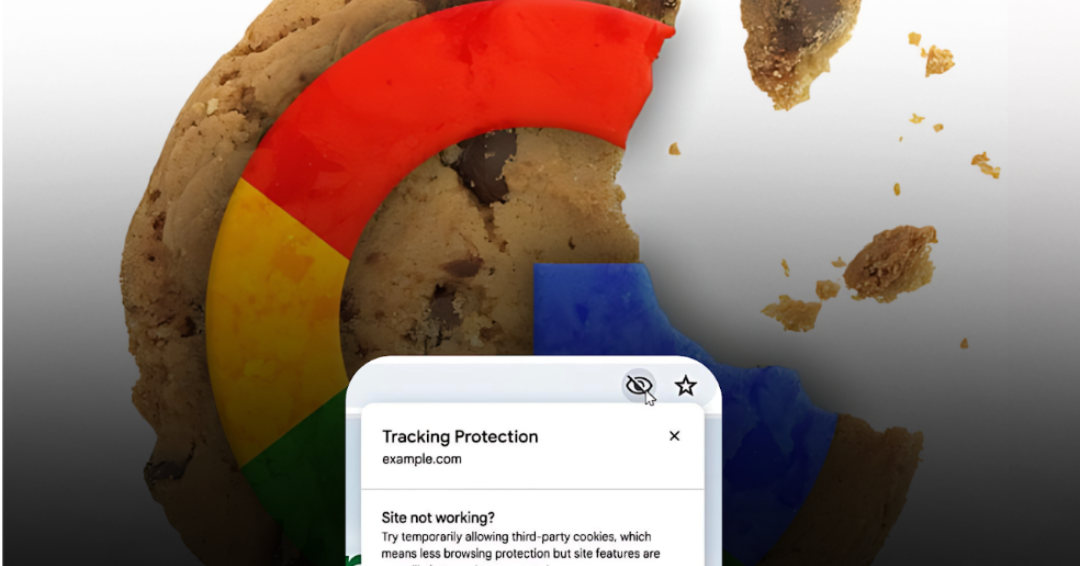
Google’s Surprising U-Turn on Third-Party Cookies: What It Means for the Advertising Industry
Google's delay in ending third-party cookies to 2024 gives advertisers more time to adapt to Privacy Sandbox, raising questions about their commitment to privacy versus maintaining market dominance.
Ghita El Haitmy
CEO & Content Creator @ Techbible
As we navigate the evolving landscape of digital advertising, Google's decision to delay the phase-out of third-party cookies presents both challenges and opportunities. In my view, this move could signal a strategic pause, allowing the industry to adapt to new technologies like Privacy Sandbox without disrupting current revenue models. It also raises questions about Google's commitment to privacy—are they prioritising user data protection, or is this a calculated effort to maintain their stronghold in digital advertising?
Let’s delve into what this means for digital advertising and user privacy.
What Are Third-Party Cookies?
Third-party cookies are snippets of code placed on a user's device by a website other than the one they are currently visiting. These cookies are commonly used by advertisers to track users across different sites, enabling them to collect data on user behaviour, personalise ads, and measure ad performance.
Various companies in the ad tech ecosystem sell and utilise third-party cookies. Key players include ad exchanges like Google AdSense, DoubleClick (now part of Google Ads), and independent ad networks such as The Trade Desk, PubMatic, and Criteo. These entities leverage third-party cookies to facilitate targeted advertising by collecting and analysing user data.
What Kind of Data is Stored in These Cookies?
Third-party cookies store a wide range of data, including:
-Browsing history: Pages visited, duration of visits, and click patterns.
- User preferences: Settings and preferences set on different websites.
- Demographic information: Inferred age, gender, and interests based on browsing habits.
- Ad engagement: Interaction with ads, such as clicks and conversions.
This data helps advertisers create detailed user profiles, allowing them to deliver highly targeted and personalised advertisements.
Google's Initial Plan: Privacy Sandbox and Its Implications
Google had initially planned to phase out third-party cookies by 2024 as part of its Privacy Sandbox initiative. This initiative aimed to enhance user privacy and address growing regulatory concerns. Privacy Sandbox proposed using alternative technologies like Federated Learning of Cohorts (FLoC) and other APIs to provide targeted advertising while protecting user data.
Why Did Google Start This Initiative?
The move to phase out third-party cookies was driven by several factors:
1. Regulatory Pressure: Increasing global regulations, such as the General Data Protection Regulation (GDPR) in the EU and the California Consumer Privacy Act (CCPA), demanded greater transparency and user control over data.
2. Privacy Concerns: Public awareness and concern over data privacy have been growing, with users demanding more control over their personal information.
3. Strategic Positioning: While Google generates significant revenue from advertising, the company also sought to position itself as a leader in privacy-centric technology, potentially giving it a competitive edge.
Despite these motives, there were concerns that Google's plans might disadvantage smaller ad tech companies while bolstering its dominance in the digital advertising market.
How Are Companies Using This Data?
Ad tech companies and publishers use the data collected via third-party cookies to:
-Target ads: Deliver ads that are relevant to individual users based on their browsing behavior and interests.
- Measure performance: Track the effectiveness of ad campaigns by analyzing user interactions and conversions.
- Retargeting: Show ads to users who have previously interacted with a brand's website, increasing the likelihood of conversion.
The Reversal: Google's New Approach
In a significant reversal, Google announced it would retain third-party cookies but introduce a "new experience" to give users more control over their web privacy. This approach involves a user-choice prompt in Chrome, allowing users to decide whether to accept or decline cookies.
Regulatory Considerations and Industry Response
Google's decision to maintain third-party cookies while exploring user-choice prompts is closely monitored by regulators, including the UK's Competition and Markets Authority (CMA). The CMA has been working with Google to ensure that any changes align with competition and privacy standards.
Industry leaders have expressed mixed reactions. Rajeev Goel, CEO of PubMatic, emphasized the importance of balancing privacy with the economic framework of a free internet, while Jeff Green, CEO of The Trade Desk, highlighted the challenges in predicting Google's next steps.
The Future of Digital Advertising and User Privacy
Google's decision provides advertisers and publishers more time to adapt to emerging privacy-preserving technologies. However, the future of third-party cookies remains uncertain, with potential shifts in regulatory landscapes and consumer expectations.
For users, the new experience promises greater transparency and control over their data. As Google continues to develop its Privacy Sandbox APIs, the advertising industry will closely watch these developments, assessing their impact on the digital advertising ecosystem.
What do you think about Google’s decision to reverse its plans on third-party cookies? How do you see this affecting your digital marketing strategies or online privacy? Share your thoughts !
For more insights on technology trends, subscribe to techbible.ai and follow us on social media.
Summary
What Are Third-Party Cookies?
What Kind of Data is Stored in These Cookies?
Why Did Google Start This Initiative?
Regulatory Considerations and Industry Response
The Future of Digital Advertising and User Privacy
6 Min Read